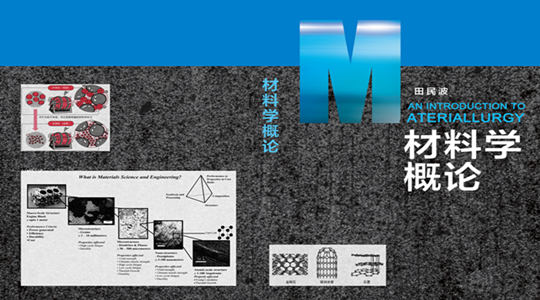
当前课程知识点:Fundamentals of Inorganic Materials Science > 2 Crystal Imperfection > 2.3 Calculation of thermal defect concentration > 2.3 Calculation of thermal defect concentration
返回《Fundamentals of Inorganic Materials Science》慕课在线视频课程列表
返回《Fundamentals of Inorganic Materials Science》慕课在线视频列表
同学们好
上节课
Last class
介绍了缺陷反应方程式的书写
这节课
结合缺陷反应方程式
讲解热缺陷浓度的计算
并且是不断产生和消失的
在一定的温度下
当单位时间内产生和因复合而消失的缺陷数目相等时
系统就达到平衡
热缺陷的数目保持不变
类似于常见的化学反应平衡
我们可根据质量作用定律
利用化学平衡的方法计算缺陷的浓度
热缺陷浓度的计算直接使用下面的公式即可
我们来看公式中每一部分表示的含义
其中小n代表单位体积缺陷的个数
大N代表单位体积晶体中的总结点数
E就代表形成缺陷所需要的能量
大家要注意单位通常是电子伏特
计算时需要把它换算成焦耳
k是玻尔兹曼常数
直接使用即可
T代表绝对温度
使用时需换成换算成开氏温度
下面我们来看点缺陷的化学平衡
缺陷的产生和消失是一个动态的平衡
与化学反应一样
也可看成动态的化学平衡
因而采用化学平衡的方法计算缺陷的浓度
这里主要介绍Frenkel缺陷和Schottky缺陷的化学平衡
首先我们来看弗伦克尔缺陷
它的特点是质点离开原来的位置
进入间隙形成间隙原子
原来的位置形成空位
缺陷反应方程式如何书写呢
以溴化银晶体为例
方程式左边为
方程式左边为
正常结点的Ag+和未被占据的间隙
右边写Ag+进入间隙形成带正电荷的Agi• 和V'Ag
化学平衡常数可以用这个公式表示
即Agi• 和V'Ag浓度的乘积
除以正常结点Ag+浓度和未被占据空隙的浓度
由于空位和间隙原子是成对产生的
因而间隙Ag+浓度和空位Ag+的浓度相等
我们再看肖特基缺陷的化学平衡
对于离子晶体而言
正负离子同时迁移到表面
形成正负离子的空位
以氧化镁晶体为例
我们看形成Schottky缺陷时
缺陷反应式如何书写
方程式左边表示正常结点处的Mg2+和O2-
右边写MgS和 OS
下标S代表表面位置
同时形成VO•• 和 V''Mg
通常
迁移到表面的新质点与原表面的质点
没有本质区别
因而
Schottky缺陷反应式可简写为
左边正常无缺陷的晶体 右边是形成的空位
空位无质量这个反应式也满足书写规则
大家要注意
为保持电中性
正离子和负离子空位成对产生
所以二者的浓度也是相等的
所以二者的浓度也是相等的
同样带入平衡常数计算公式
计算Schottky缺陷的浓度
从以上讲解可以看出
Frenkel和Schottky缺陷的浓度计算公式
具有相同的形式
has the same form
热缺陷的浓度是
缺陷形成自由焓和温度的函数
他们之间的关系可归纳为
开始时介绍的浓度公式
温度越高
热缺陷浓度越大
我们来回顾一下这节课的内容
这节课主要以Frenkel缺陷和Schottky缺陷为例
介绍了缺陷浓度的计算
大家要掌握其计算方法
这节课就讲到这里
同学们再见
-Test for chapter 1
-2.1 Type of defect
-2.2.1 The expression methods of point defects
--2.2.1 The expression methods of point defects
--2.2.1 The expression methods of point defects
-2.2.2 The rules for writing of defect reaction equation
--2.2.2 The rules for writing of defect reaction equation
--2.2.2 The rules for writing of defect reaction equation
-2.3 Calculation of thermal defect concentration
--2.3 Calculation of thermal defect concentration
--2.3 Calculation of thermal defect concentration
-2.4 Non-stoichiometric compounds
--2.4 Non-stoichiometric compounds
--2.4 Non-stoichiometric compounds
-Homework for chapter 2
-Test for chapter 2
-3.1 The classification of solid solutions
--3.1 The classification of solid solutions
--3.1 The classification of solid solutions
-3.2 Substitutional solid solution
--3.2 Substitutional solid solution
--3.2 Substitutional solid solution
-3.3 Interstitial solid solution
--3.3 Interstitial solid solution
--3.3 Interstitial solid solution
-3.4 The research method of solid solutions
--3.4 The research method of solid solutions
--3.4 The research method of solid solutions
-3.5 Questions for crystal imperfection and solid solution
--Questions for crystal imperfection and solid solution
-Homework for chapter 3
-Test for chapter 3
-4.1 Melt structure
-4.2 The properties of the melt
--4.2.1 The properties of the melt_viscosity
--4.2.2 The properties of the melt_surface tension
--4.2 The properties of the melt
-4.3 The characteristics of glass
--4.3 The characteristics of glass
--4.3 The characteristics of glass
-4.4 The formation of glass
--4.4.1 The formation of glass_kinetics conditions
--4.4.2 The formation of glass_crystal chemical conditions
-4.5 The structure of glass
-4.6 The typical glass
-4.7 Questions for melt and glass
--Questions for melt and glass
-Test for chapter 4
-5.1 Phase equilibrium in silicate systems
--5.1 Phase equilibrium in silicate system
--5.1 Phase equilibrium in silicate system
-5.2 One-component system phase diagram
--5.2 One-component system phase diagram
--5.2 One-component system phase diagram
-5.3 Applications of one-component diagrams
--5.3 Applications of one-component diagrams
--5.3 Applications of one-component diagrams
-5.4 Binary diagrams
--5.4.1 Binary diagram with eutectic point
--5.4.2 Binary system with a congruent melting compound and one with an incongruent melting compound
--5.4.3 Other five types of phase diagrams of binary systems
-5.5 Applications of binary phase diagrams
--5.5 Applications of binary phase diagrams
--5.5 Applications of binary phase diagrams
-5.6 Ternary diagrams
--5.6.1 Representation of ternary system composition
--5.6.1 Representation of ternary system composition
--5.6.2 Three-dimensional state diagram and plane projection diagram of a simple ternary system
--5.6.2 Three-dimensional state diagram and plane projection diagram of a simple ternary system
--5.6.3 (1) Basic types of ternary phase diagrams
--5.6.3 (2) Basic types of ternary phase diagrams
--5.6.3 (3) Basic types of ternary phase diagrams
--5.6.3 Basic types of ternary phase diagrams
-5.7 Applications of ternary phase diagrams
--5.7 Applications of ternary phase diagrams
--5.7 Applications of ternary phase diagrams
-5.8 Research methods of phase equilibrium
--5.8 Research methods of phase equilibrium
--5.8 Research methods of phase equilibrium
-5.9 Questions for phase equilibria
--Questions for phase equilibria
-Homework for chaper 5
-Test for chapter 5
-6.1 Overview of diffusion
-6.2 The kinetic equations of diffusion
--6.2 The kinetic equations of diffusion
--6.2 The kinetic equations of diffusion
-6.3 The thermodynamic equation of diffusion
--6.3 The thermodynamic equation of diffusion
--6.3 The thermodynamic equation of diffusion
-6.4 Diffusion mechanisms and diffusion coefficient
--6.4 Diffusion mechanisms and diffusion coefficient
--6.4 Diffusion mechanisms and diffusion coefficient
-6.5 Diffusion in solid
-6.6 Factors affecting diffusion
--6.6 Factors affecting diffusion
--6.6 Factors affecting diffusion
-6.7 Questions for diffusion
-Homework for chaper 6
-Test for chapter 6
-7.1 Overview of solid state reactions
--7.1 Overview of solid state reactions
--7.1 Overview of solid state reactions
-7.2 Kinetic equation of solid state reaction
--7.2 Kinetic equation of solid state reaction
-7.3 Factors affecting the solid state reaction
--7.3 Factors affecting the solid state reaction
--7.3 Factors affecting the solid state reaction
-Homeword for chapter 7
-8.1 The categories of phase transformation
--8.1 The categories of phase transformation
--8.1 The categories of phase transformation
-8.2 Crystallization
--8.2.1 Crystallization thermodynamics
--8.2.2 Crystallization kinetics
-8.3 Phase Separation of glass
--8.3 Phase separation of glass
--8.3 Phase separation of glass
-8.4 Questions for phase transformation
--Questions for phase transformation
-Test for chapter 8
-9.1 Overview of sintering
-9.2 The driving forces and models of sintering
--9.2 The driving forces and models of sintering
--9.2 The driving forces and models of sintering
-9.3 Solid state sintering
--9.3.1 Evaporation-Condensation mass transfer
--9.3.2 Diffusion mass transfer
-9.4 Liquid phase sintering
--9.4.2 Solution-Precipitation mass transfer
-9.5 Grain growth and secondary recrystallization
--9.5.2 Secondary recrystallization
--9.5 Grain growth and secondary recrystallization
-9.6 Factors affecting sintering
--9.6 Factors affecting sintering
--9.6 Factors affecting sintering
-9.7 Questions for sintering
-Homework for chapter 9
-Test for chapter 9







